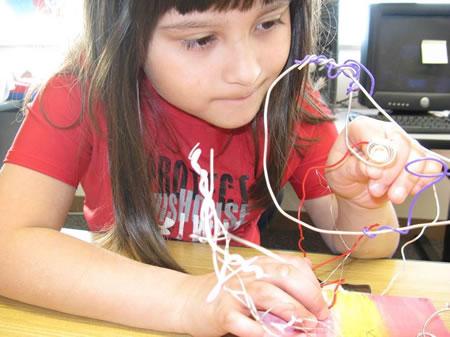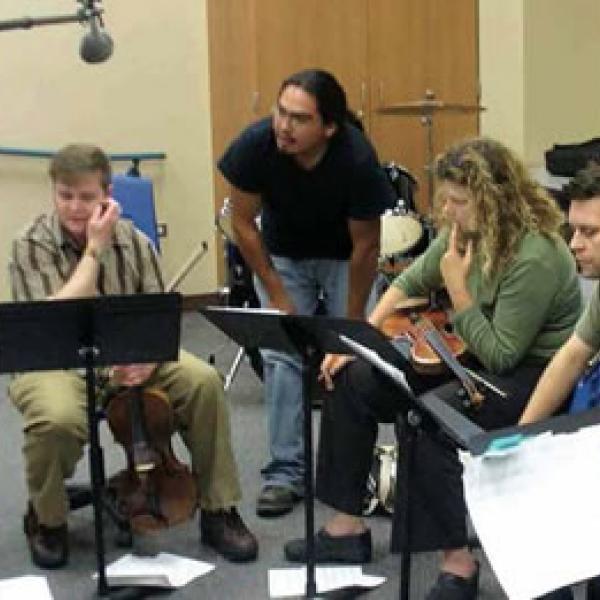The Right Brain Initiative

Although Portland, Oregon, is recognized as a vibrant creative community, nearly one-third of elementary schools have absolutely no arts instruction--no music, visual art, dance or theater. The Right Brain Initiative, run by the Regional Arts & Culture Council (RACC) in Portland, is determined to change that. A strong example of the positive outcomes of collective impact, Right Brain's vision is to transform learning for all children--regardless of zip code, language spoken, or readiness to learn--through the arts, creativity, innovation, and whole brain thinking--when both the left and right sides of the brain work together. Through teacher/artist collaborations, the arts are integrated with other core subjects, developing habits of mind that will serve children in all aspects of life. Between the recent passage of the Arts Education and Access Fund, which provides funding for elementary school arts teachers, and the Right Brain Initiative, over time all students in Portland schools will receive an excellent arts education through the shared delivery of instruction by classroom teachers, arts teachers and teaching artists.
NEA Arts Education Director Ayanna Hudson spoke with Marna Stalcup, program manager of the Right Brain Initiative, about her work and the importance of collective impact to its success. For additional discussion on the Right Brain Initiative, check out the NEA's podcast with Stalcup.
AYANNA HUDSON: How did you go about gaining community support to start the initiative? What is the continued role of your community leaders?
MARNA STALCUP: From the get-go we engaged and listened to all stakeholders. We held focus groups with school district leaders, the arts community, business executives, and funders; hosted community conversations with a broad spectrum of citizens; and built committees of teachers, principals, and artists. Having the endorsement of the mayor was a huge asset. They all were (and still are) committed to developing a systemic model to support the future of our youngest citizens. Now, five years later, many are serving on our governing committee that oversees the implementation of this dream--with RACC acting as the backbone organization/managing partner.
NEA: How do you measure progress over time?
STALCUP: We look at equitable access to arts learning, one of our core values. So, one way of measuring our progress is tracking the increase in schools involved and students served. Since it began five years ago, the initiative has added schools every year, resulting in a 125 percent increase overall with over 11,000 K-8 students now engaged each year. This is notable in light of school districts' ongoing budget challenges. (Each district is required to contribute $15 per pupil annually to cover the cost of artist fees.)
Student access to diverse arts experiences is monitored through an online school map, a record of arts services and arts disciplines provided at each grade level. This tool also helps track the extent to which schools expand on the resources of Right Brain--what additional units of arts integrated instruction, projects, assemblies, and performances do teachers, principals, and families build into the school year.
Actively engaging learners requires innovative teaching. Right Brain's professional development sequence is designed to help teachers and artists develop a common language for teaching and learning and to acquire high-impact strategies based in the arts. As teachers experience more professional development and more partnerships with artists, the strategies of arts integration become an increasingly regular part of the way they approach teaching and learning. A year-end teacher survey in 2012 revealed that all teachers who participated in professional development now use Right Brain strategies in their classrooms; 64 percent report doing so on a regular basis.
NEA: How will this work be sustained over time?
STALCUP: From the beginning the Right Brain Initiative has been supported by a 50/50 public/private-sector funding mix as we've consistently leveraged local government and school district funds with grants and contributions from foundations, corporations, and individuals throughout the region. This year we experienced a 45 percent growth in participating schools with only an 18 percent increase in budget. Economies of scale and attention to operational efficiencies have allowed us to maintain a high-quality program. However, if expansion is to continue at such a rate, we will be challenged to develop creative funding solutions that reach beyond the local community. Thanks to support from the National Endowment for the Arts, we have begun that effort.
Two other strategies are important to our long-term success and go hand-in-hand: maintaining partner relations and continuing to build their capacity. The first requirement is constant communication, keeping our eyes and ears open to the needs of all stakeholders as we pursue our shared vision. We ask ourselves: What are the new challenges and priorities school districts are facing? What resources from arts organizations and the community can be leveraged to meet these goals? Bottom-line, this is a never-ending discussion.
Second, we are always pursuing ways for our partners to "own the practice." Professional development is a big factor, as are leadership supports for teachers and professional networks for principals and artists. Rather than always "doing for," we strive to build the capacity to lead from within, thus creating a model for sustainable systemic change. As an example, schools are encouraged to identify keepers-of-the-strategies--teachers who are confident in coaching their peers in arts-based instructional strategies. Then there are veteran artists who can model effective collaborative planning for their peers new to the field. Or consider a hybrid approach--on-the-job experience where teachers learn from artists and artists learn from teachers. In every case, partners take ownership and capacity grows.









